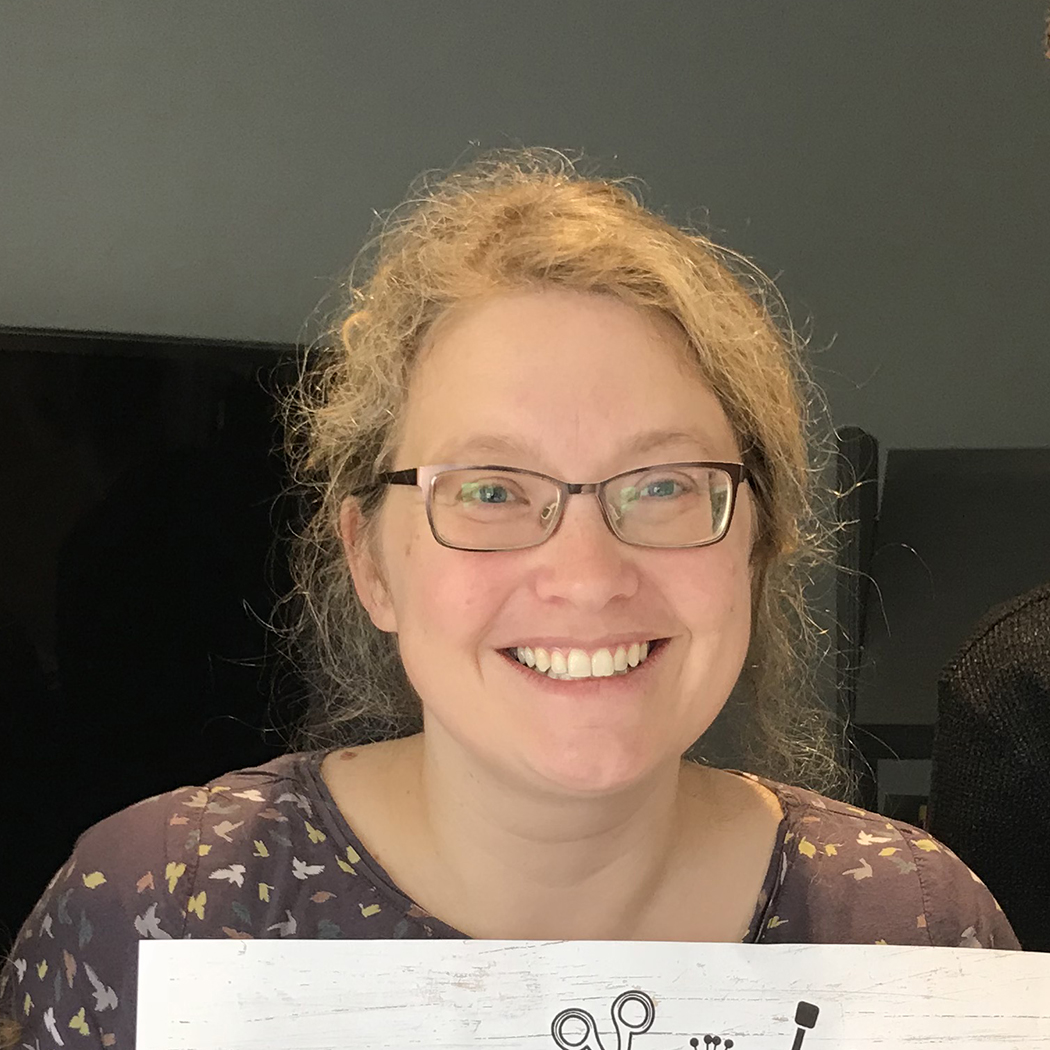Knitting needles come in all shapes and sizes. Beginners usually start working on two straight needles. But do you like knitting on straight knitting needles? Some knitters like to work straight knitting projects on circular knitting needles, as the cable between the two needles make it much more straightforward to manage lots of stitches in larger knits, or if you like to take your knitting out and about with you. But as well as the different types, knitting needles are also available in a variety of materials. The most popular materials are bamboo, plastic, and metal.
These materials can make all the difference to your knitting. You’ll need to think about both the yarn you’re using and your own skill level when selecting your knitting needles. If you’re a beginner then you’ll want to avoid slippery needles (such as metal and plastic) as your stitches are more likely to slip off. More experienced knitters might actually prefer more slippery needles as their stitches will move easier and quicker.
As you take on more and more knitting projects, you'll likely collect a set of lots of different knitting needles in a whole host of sizes and materials! But let's take a look at the pros and cons of different knitting needles and which knitting needles you need in your stash.
When starting a project, try to think about what yarn you’ll be using and how well it will work with the knitting needles you want to use. However, many people simply prefer a certain type of needle and use them with every project. Find your favourite material and stick to it if that’s what you knit best with!
Let's take a look at the different types of knitting needle so can you explore which knitting needle you need for your project...
Bamboo knitting needles
Bamboo needles are lightweight and comfortable to hold. They also have a slightly textured surface, keeping stitches in place (which is great for beginners). Bamboo needles tend to work well with all yarns, but are best used with smooth and lightweight yarns. They’re quite flexible and while this can be a bonus, the smaller sizes tend to bend and break easier than other types of needles. As bamboo grows so quickly, knitting needles made from bamboo are a popular choice for knitters looking to reduce their impact on the environment. As a material, it is faster growing than wood, and will eventually break down unlike plastic knitting needles or metal knitting needles. But they cab be quite fragile, especially at smaller knitting needle sizes, so can be prone to break if you don't treat them with care
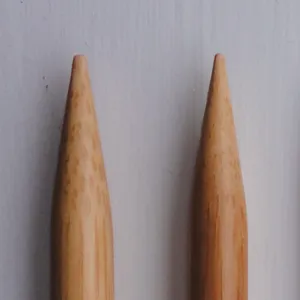
Buy bamboo knitting needles from Amazon
Metal knitting needles
Unlike bamboo needles, metal needles are very strong and therefore do not bend easily (or break), so they are a good choice for taking out and about with you in a bag, especially if you are using a small needle size as the needles are then so thin. However, metal knitting needles are quite heavy and can be cold to the touch. This can be unpleasant in the colder months, especially fi you have issues with arthritis or trouble with dexterity in your hands. But this is balanced out by their slippery surface, which lets stitches glide with less friction, which can help for a more smooth and pain-free knitting experience. It also allows for faster knitting and this makes them a preferred choice for more experienced knitters. Metal needles suit all types of yarn, but work best with wool (including wool blends) and acrylic.
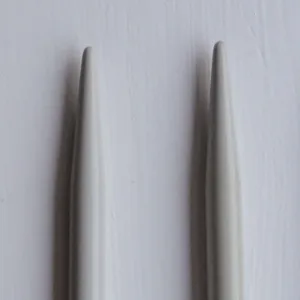
Buy metal knitting needles from Amazon
Plastic knitting needles
Plastic knitting needles are just as smooth as metal ones, but are a lot lighter and very flexible (even more than bamboo knitting needles). Available in loads of different looks, with coloured plastic, and you can even get clear coloured plastic with glitter in the mix, which is a lot of fun. This along with their lightweight style makes them easier for kids to knit with. They can be delicate in smaller knitting needle sizes, though. And plastic is never a great choice for the environment, as they don't break down in the way that wooden needles will occur time. Plastic knitting needles work with any type of yarn, but are great for chunky yarns that need a larger needle size as they won’t be as heavy as other types of needles. Sticking to larger needle sizes if you opt for plastic means they are less likely to break, so they can still be useful in your materials rather than being broken and in landfills.
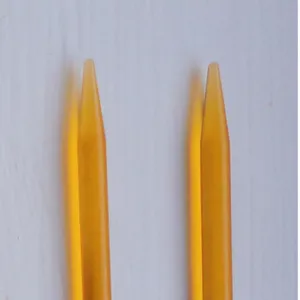
Buy plastic knitting needles from Amazon
Wooden knitting needles
Wooden knitting needles aren’t slippery, just like bamboo ones, but they still have a smooth feel. But they'll give a little extra grip to hold your stitches on the needles, so are a good choice if you are prone to dropping stitches or slipping entire projects off your needles accidentally! They’re great for both experienced knitters and beginners, and work well with slippery yarns, where the yarn can slide more smoothly in the knit. You can find a variety of wooden needles available, but the hardwoods are best as they’ll be sturdier. Still, like bamboo, wooden needles have a tendency to break (especially in the smaller sizes).

Buy wooden knitting needles from Etsy
Circular knitting needles
Including circular knitting needles on this list is a bit of a rogue element, because these needles can be made in metal, plastic, wood or bamboo! But many knitters prefer using circular needles for all their projects, even those that can be stitches straight on two needles. They also need a little explaining because circular knitting needles have a long cable or cord loop attached between the two needles – but despite this cable, these are not cable needles! A cable needle is actually a very short needle designed to park a few stitches on when you are knitting cables. with circular knitting needles, the cable or cord between the needles means that you can use circular needles to stitch in the round, slipping stitches from one needle to the other along the cord for a continuous knitting experience. But even if you have project that is knitted in individual rows, it is often easier to work this on a circular needle. The cable is handy for holding your stitches safely, especially if you are working a project with lots of stitches in the row. It makes it easier to manage you work and is often an easier and more relaxing knitting experience, as the bendy cord does not get in your way like long straight needles can.
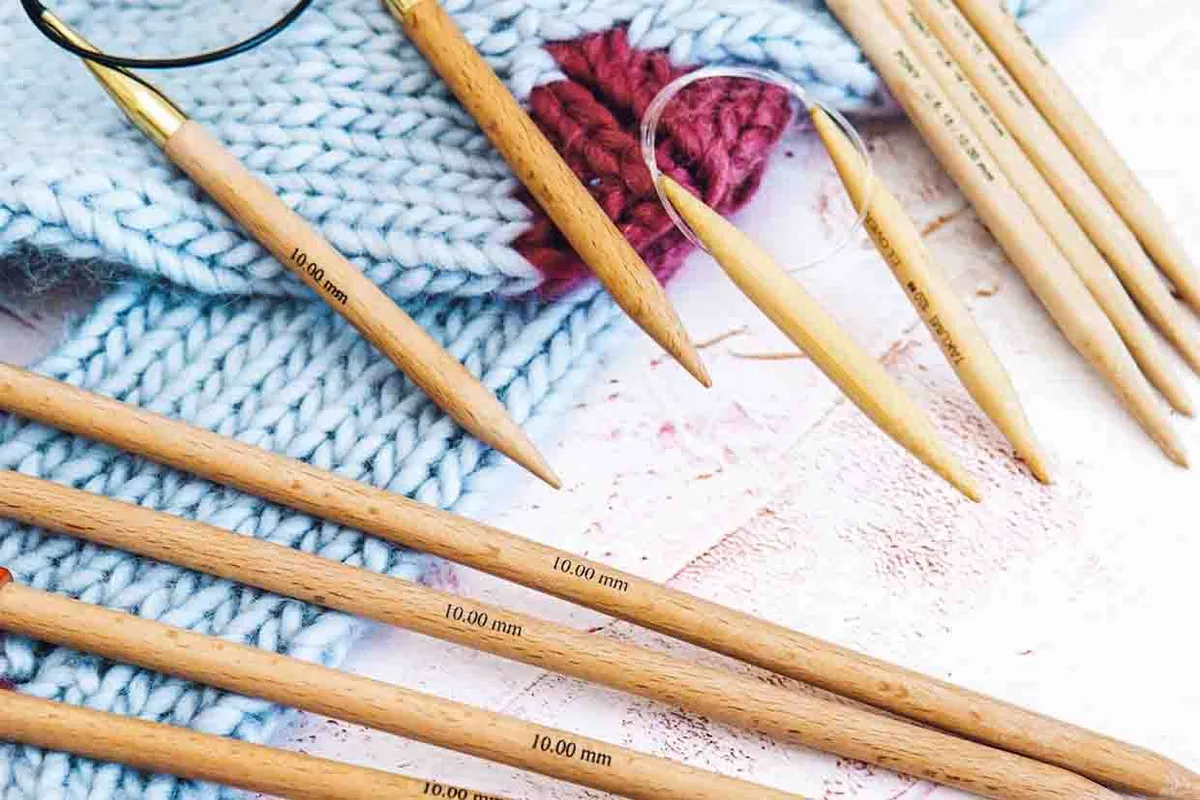
Buy circular knitting needles from Etsy
What to knit with your knitting needles?
Check out these brilliant free patterns we have for you ob Gathered! Try our dinosaur jumper knitting pattern or our premature baby hat knitting pattern. For an easy blanket for a beginner, check out our how to make a chunky knit blanket tutorial, or more experienced knitters will like our chunky knit blanket knitting pattern.We've got a brilliant mermaid knitting pattern and elephant knitting pattern, as well as our toy dog knitting patterns for you, too.
